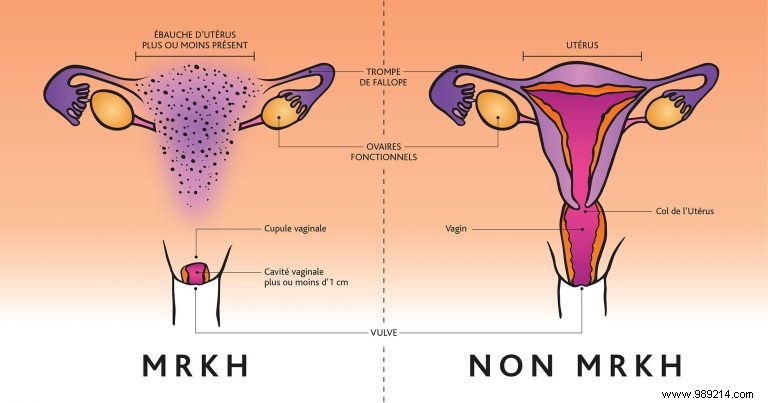One in 4,500 women worldwide has no uterus or vagina. This is Mayer-Rokitansky-Küster-Hauser (MRKH) syndrome, simplified to Rokitansky syndrome. Patients affected by this rare congenital malformation face a veritable obstacle course to regain a semblance of normal life.
First of all, you should know that Rokitansky syndrome is a form of intersex. This term qualifies people born with sex characteristics that do not fit the typical definitions of male and female. In fact, Rokitansky syndrome affects women born without a vagina and without a uterus . Sometimes there can also be partial congenital absence.
The syndrome appears in utero, but is discovered in adolescence in 80% of cases . This is particularly the case for young Élisa, whose testimony was the subject of an article published in Slate on March 5, 2021. At the age of 17, her gynecologist announced to her the presence of two ovaries, a partially formed vagina and above all, an absence of a uterus. A few months earlier, Élisa had undergone an MRI because of her absence of periods, despite the presence of developed sexual characteristics. The verdict was final:impossible to be pregnant, nor even to have vaginal intercourse.
President of the MRKH Association in France, Amélie Victor has heard many testimonies from women with this syndrome. She explains to act for a multiplication of studies on the subject. And for good reason, knowledge of the MRKH syndrome is limited. Nevertheless, it has been established that it is a question of a gene mutation occurring during the sixth week of embryo development. However, this mutation stops the formation of Müller's ducts before their term. Worldwide, approximately 1 in 4,500 women are affected , but this number could be below reality.

Several methods exist to counter this syndrome. The first is vaginal dilation (or Frank's method). The goal? Create a new vagina through the patient's use of dilators of different sizes. These dilators will gradually dilate the vaginal cup. The advantage of this method is that it uses tissue from the young woman. In six months, this allows the appearance of a vagina of normal size. Nevertheless, this must be accompanied by therapeutic education of the patient. The other possibility is surgery, notably with vaginoplasty by a sigmoid graft and the Vecchietti technique. According to experts, the results of these operations are not necessarily better than those of vaginal dilation. They also imply a great psychosexual maturity of the patient as well as a good experience of the medical teams.
If successful, the means mentioned above allow a clear improvement in sex life patients. On the other hand, the absence of a uterus completely excludes the possibility of giving birth. However, the uterus transplant authorized in France in 2015 could change the situation. In 2019, Professor Jean-Marc Ayoubi from Foch Hospital in Suresnes performed the first transplant of this kind in the country. This is obviously a particularly complicated intervention. Currently, researchers are awaiting results regarding the implantation of embryos, pregnancy and birth to know if it is really a viable technique in all respects.